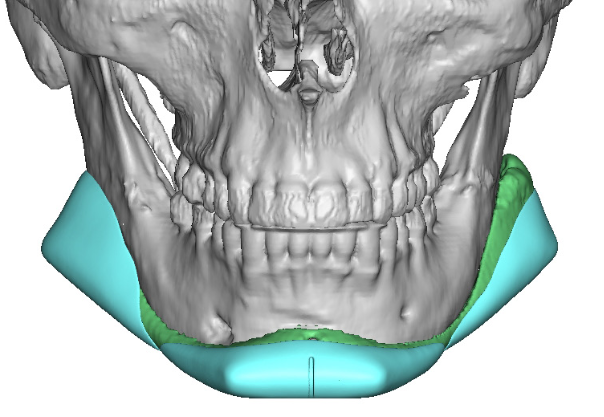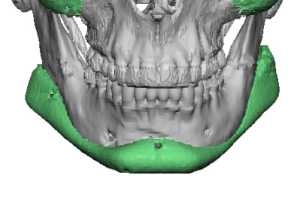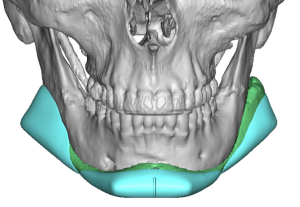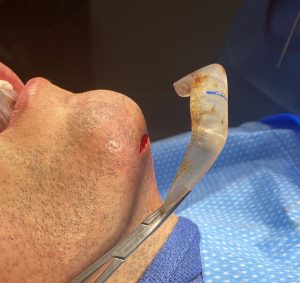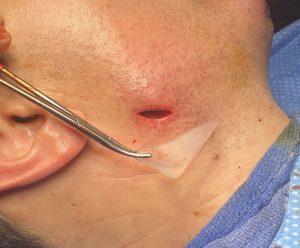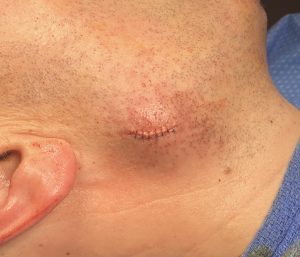Background: The custom jawline implant offers a preoperative design approach to jaw augmentation. While exerting a potentially powerful effect the relationship between the implant’s design and its aesthetic effect is not completely predictable. A custom implant’s design is not yet an exact science. There is no current design software that can show exactly what the after effects of the implant’s design will be. Thus the implant’s design is the surgeon’s best guess as what shape and dimensions will come closest to the patient’ aesthetic goals.
Besides the unknown exact postoperative effects of a jawline implant’s design there is also the patient’s eventual interpretation of the aesthetic result. It is one thing to want a specific facial enhancement but it is another to actually ‘wear it’. Patient’s can sometimes get close to their preoperative imaged goal only to feel about it differently when looking at it for awhile.
This postoperative dissatisfaction is often seen in jawline implant designs that may initially have been conservative or do not have enough angularity. (prominent chin and jaw angle shapes) One option to improve it is to replace the jawline implant with a new implant design. While that approach has its merits it comes with risks of infection as well as a repeat significant recovery. An alternative approach is to directly augment the corners of the jawline with an overlay implant technique.

Despite this result he wanted some additional enhancements of the chin and jaw angles for even better corner definition/angularity. For the amount of additional augmentation that he wanted a complete jawline replacement did not seem worthy of the risks. (poor benefit:risk ratio) An implant overlay technique was decided to have a more favorable benefit:risk ratio.
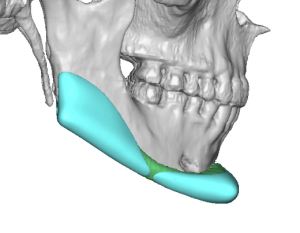
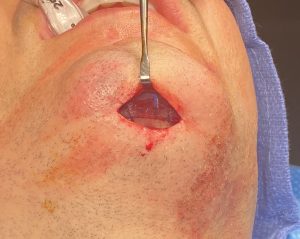

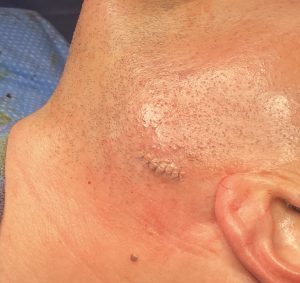
The overlay implant concept, while able to be applied to any face or skull implant, has very limited indications. The main purpose of its use in is to avoid the need to do a whole jawline implant replacement. If it is just a bit more accentuation of the corners of the jawline a cap coverage can do enough to provide that extra effect. It can be striking how just a few more millimeters of augmentation can make a significant visual difference.
While the chin overlay does not introduce any more scar burden the jaw angle one does. But the very small 1 cm incision over the beard skin on the backside of the jaw angle heals very well. Besides providing the best exposure the jaw angle proper it also reduces the risk of infection going through the skin than the mouth.
Case Highlights:
1) The custom jawline implant offers the most effective 3D augmentation of the lower third of the face whose preoperative design focuses its effects at its corners. (chin and jaw angles)
2) For greater angularity of a custom jawline implant result options are replacement with a new custom jawline implant or custom overlay chin and jaw angle additions.
3) The implant overlay technique uses direct access incisions for their placement, avoiding any intraoral placement approaches.
Dr. Barry Eppley
World-Renowned Plastic Surgeon

